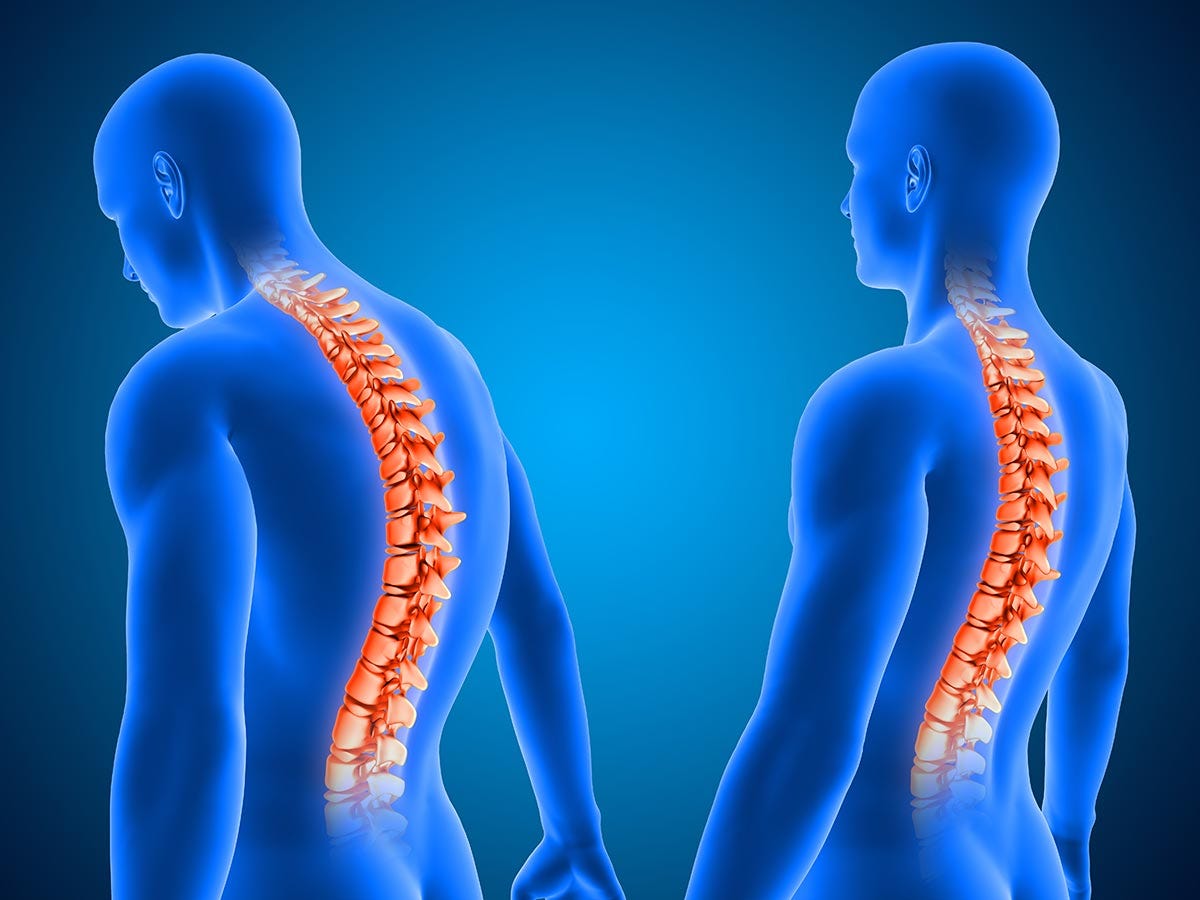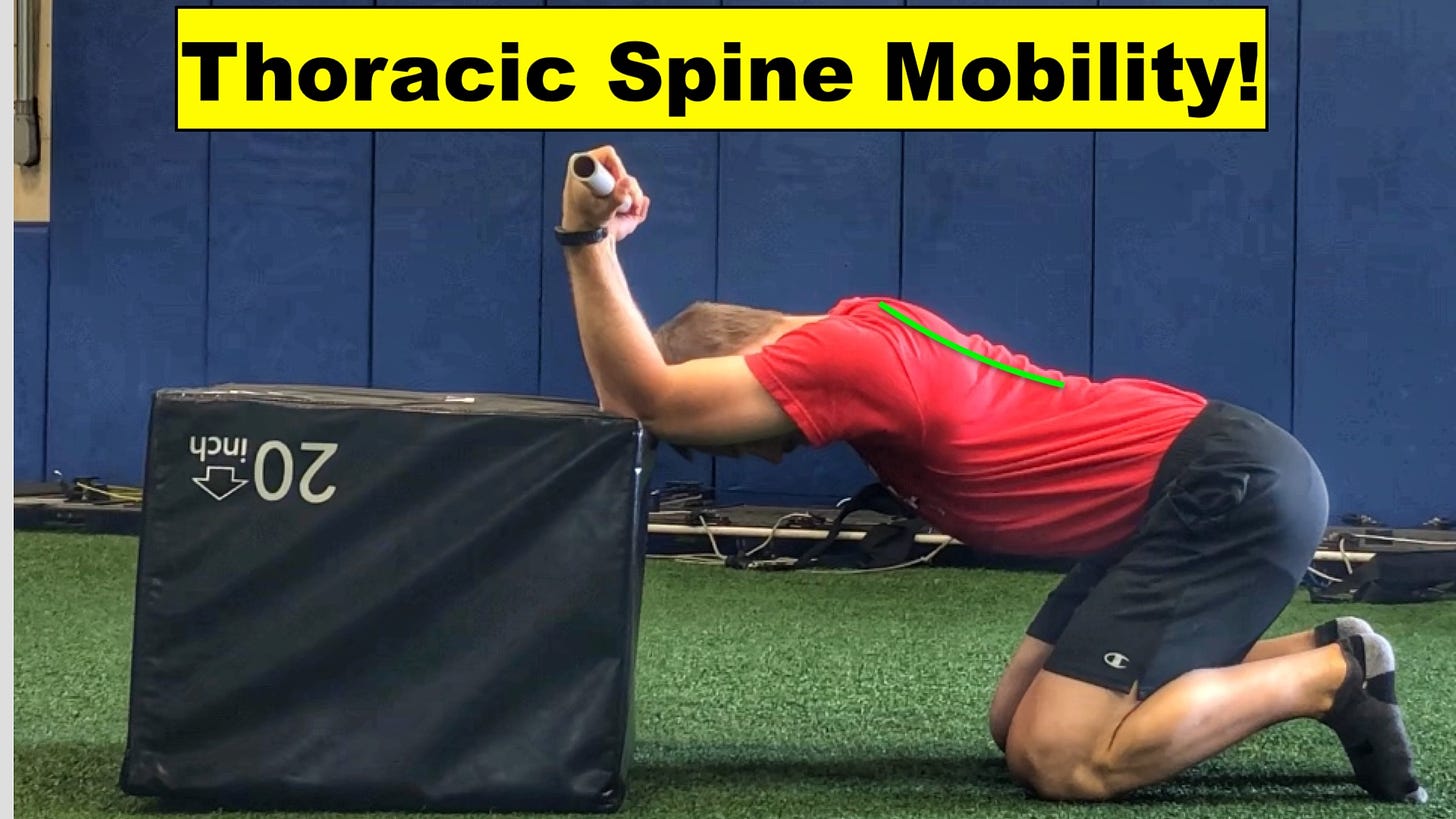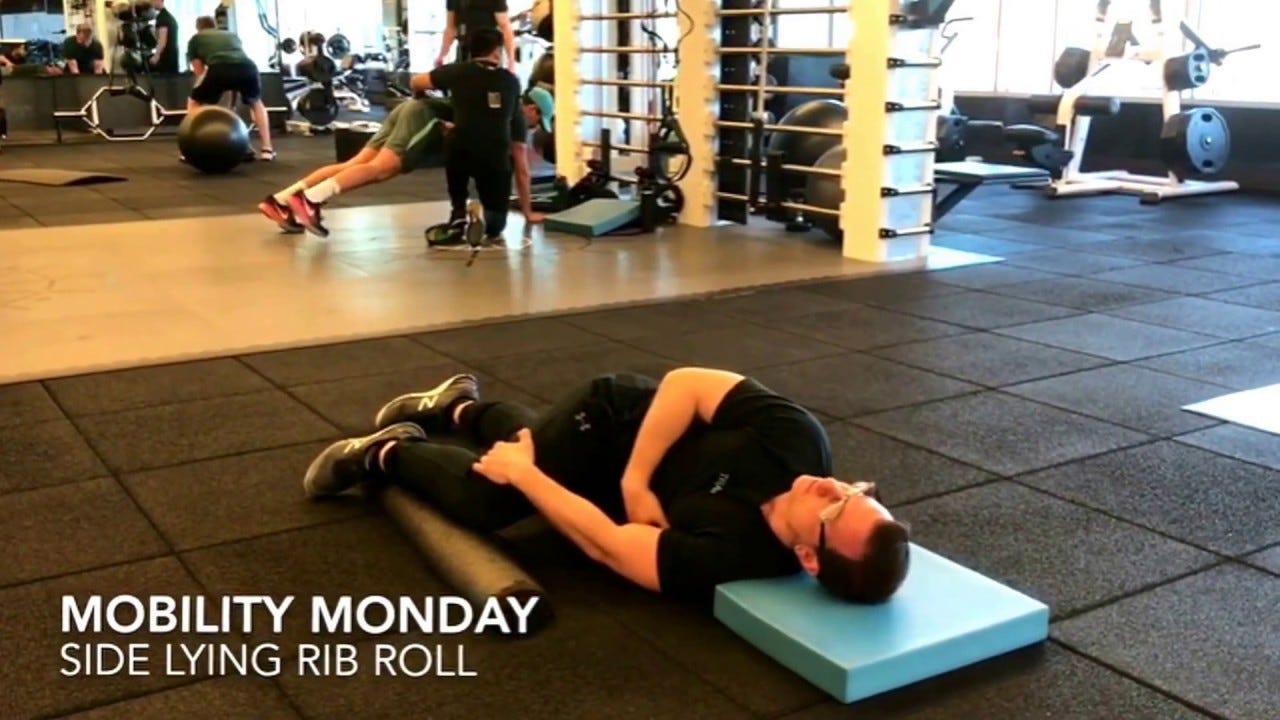
In my last post, I provided a brief overview of hyperkyphosis, its clinical implications, as well as methods of detecting thoracic stiffness and restriction. William provided insight into possible modes of improving or restoring normal kyphotic curves within the thoracic vertebral region. I would like to provide corrective strategies that I implement in my practice, my reasoning behind them, and the theories these movements are based upon.

There are many effective methods of improving thoracic extension and rotation. When I am coaching clients, I attempt to acknowledge that they have to manage many motions and joints. In conjunction to finding a movement that improves upper back mobility, I have to recognize that the complexity of the movement may be overbearing and detract from its intended purpose.

If there are too many joints to manage, the client may become excessively stiff, in an attempt to control movement. This process is known as freezing the degrees of freedom (Magill, 2011). To circumvent this problem, I try to show exercises that are simple, yet effective. This is achieved by placing the client in a side lying or quadruped position. These placements minimize or completely cut out, joint and muscle involvement from the lower body. Additionally, they allow the tonic and phasic muscles to relax more, as the clients are not upright.

Gentile’s taxonomy of motor skills is another approach I use to gauge progressions of exercise once the simplest exercise is found and implemented (Magill, 2011). The taxonomy helps me decide how to upwardly progress the original movement without making each progression too overbearing. In this way, clients can achieve success, maximize their learning experience, and reduce chances of injury. Below are two examples of basic thoracic spine mobilization drills that I implement: Side Lying Thoracic Spine Mobilization, Quadruped Thoracic Spine Mobilization. These would generally form the foundation of clients’ programs, which the rest of their thoracic mobility, self-myofascial release, behavior modification and strengthening programs are built upon.
Considering that Katzman, Wanek, Shepherd and Sellmeyer (2010) stated that hyperkyphosis limits both thoracic extension and rotation, the two aforementioned mobility exercises addresses this in a simplified fashion, while also incorporating principles of motor control. In this way, I can implement mobilization exercises that are rudimentary, effective, and easy to perform independently.
References
Katzman, W. B., Wanek, L., Shepherd, J. A., & Sellmeyer, D. E. (2010). Age-related hyperkyphosis: Its causes, consequences, and management.Journal of Orthopaedic & Sports Medicine. 40 (6), 352-360.
Magill, R. A. (2011). Motor learning and control: Concepts and applications (9th ed.). New York: McGraw-Hill.
-Michael McIsaac
